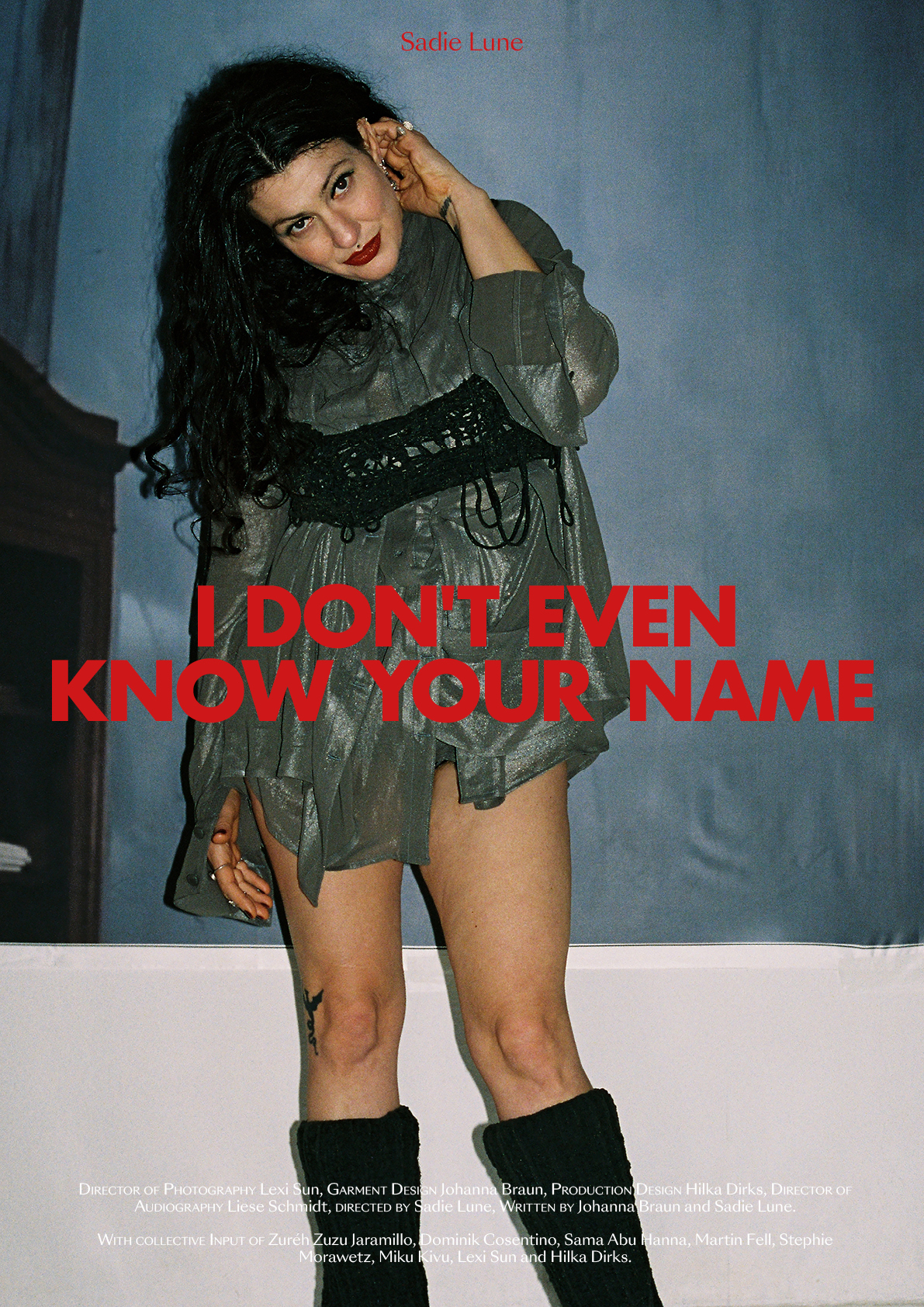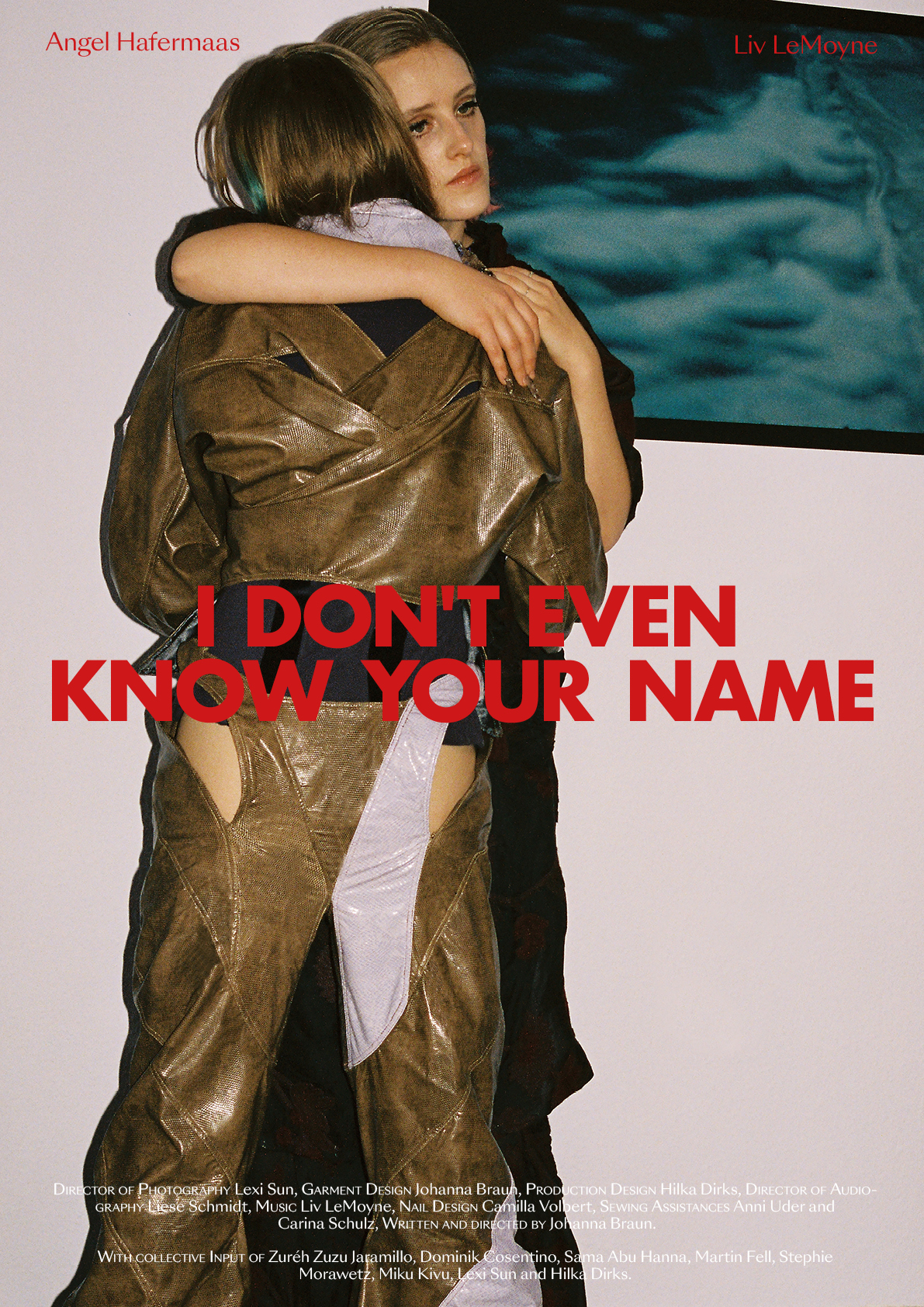IDEKYN – I DON`T EVEN KNOW YOUR NAME | Masterarbeit 2021
Alle Objekte und Kollektionen müssen dokumentiert werden, um ihre Existenz zu beweisen oder ihre Desirability zu vermarkten. Sie werden in einem Setting platziert, um fotografiert oder gezeichnet zu werden. In meinem Masterprojekt IDEKYN schöpfte ich aus einen historischen, theoretischen und künstlerischen Ansatz des Endergebnisses: dem Bild.
Als Designerin stellt sich mir häufig die Frage, wie ich Recherche aus queeren, intersektionell-feministischen und dekolonialen Feldern in physische Formen oder Kleidungsstücke übersetzen kann. Abgesehen von bewussten studies in der Theorie, existiert am Ende nämlich ein Produkt, das nicht spricht und im schlimmsten Fall auf den ersten Blick eine eindimensionale Botschaft vermittelt. Ich habe den Eindruck, dass Ideen, die auf den gekleideten Körper projiziert werden, oft den Kontext einer Universität, einer Kunstgalerie oder intensiver Marketingmöglichkeiten benötigen, um ein Narrativ zu etablieren. Die geltenden „Dresscodes“ reproduzieren und feiern oder dekonstruieren und “reclaimen” Implikationen von beispielsweise gender-spezifischer Geschichte. Letztendlich bedeutet dies, dass Designer:innen durch das kulturelle Konstrukt der Binarität kommunizieren, da selbst ihre Kritik und Anti-Haltung auf der visuellen Akzeptanz dieses Erbes beruht. Im besten Fall sind die Kleidungsstücke dann Werkzeuge für bewusste performative Handlungen.
In meinem Masterprojekt entwarf ich ein kollektives Film-Experiment, welches in ein Wurzelgebilde aus unterschiedlichen Knotenpunkten verflochten ist, um hierarchischen Machtstrukturen, die Beobachten, Interpretieren und Repräsentieren auf konditioniertes Sehen zurückführen, entgegnen zu wirken. Der Projektprozess konzentriert sich eher auf die Möglichkeiten des Schreibens und Schaffens durch, als über einen ersten Ausgangspunkt, um eine rein subjektive Inspirationsquelle zu generieren. Ausgehend von den Möglichkeiten surrealistischer Ansätze, bewusster sowie unbewusster politischer Bildgestaltung und der exhibitionistischen Qualität des Filmemachens verstehe ich das Konzept als Experiment in der Gestaltung bewegter Bilder durch eine Collage aus Forschung, Fiktion und kollektiver Autorschaft.
All objects, fashion products or collections need to be documented in the end, to prove their existence or market their desirability. They need to be placed in a setting to be photographed, rendered or drawn. Within my master project I DON’T EVEN KNOW YOUR NAME, I drew from a historical, theoretical and artistic approach of the final result: the image.
As a designer I find it hard to translate research from queer, intersectional-feminist and decolonial theories into an actual physical form or garment. Of course, apart from conscious studies and research, in the end, there somehow is a product that does not talk and, in its worst cases, at first sight conveys a one-dimensional message. I am under the impression that ideas projected onto the dressed body often need the context of a university, an art gallery or intense marketing possibilities to shape a narrative. The “dress codes” applicable either reproduce and celebrate, or deconstruct and reclaim implications of for example gendered history. Ultimately, it means that designers communicate through the cultural construct of the binary, as even their critique and anti-attitude are based on the visual acceptance of this legacy. At their best, the garments then are tools for conscious performative acts.
To counter the double-bind that ties observation, figuration and representation to the hierarchical power structures embedded in the shared realities of our lives, I wanted to explorer methods of thinking about and collaborating with other humans. The process centres on the possibilities of writing and creating through or by, rather than about a first starting point to generate a purely subjective source of inspiration. Drawing from the possibilities of surrealists approaches, conscious and unconscious political design, and aesthetic attraction-based film making, I understand the concept as an experiment of creating images through a collage of research, fiction writing, and shared authorship.
Prozess:
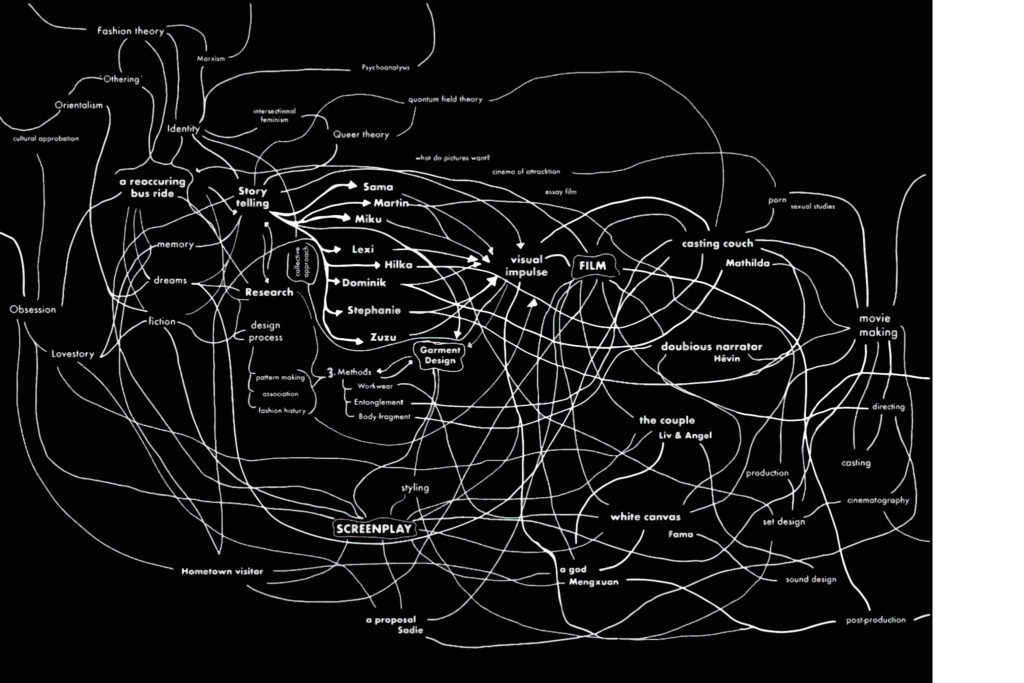
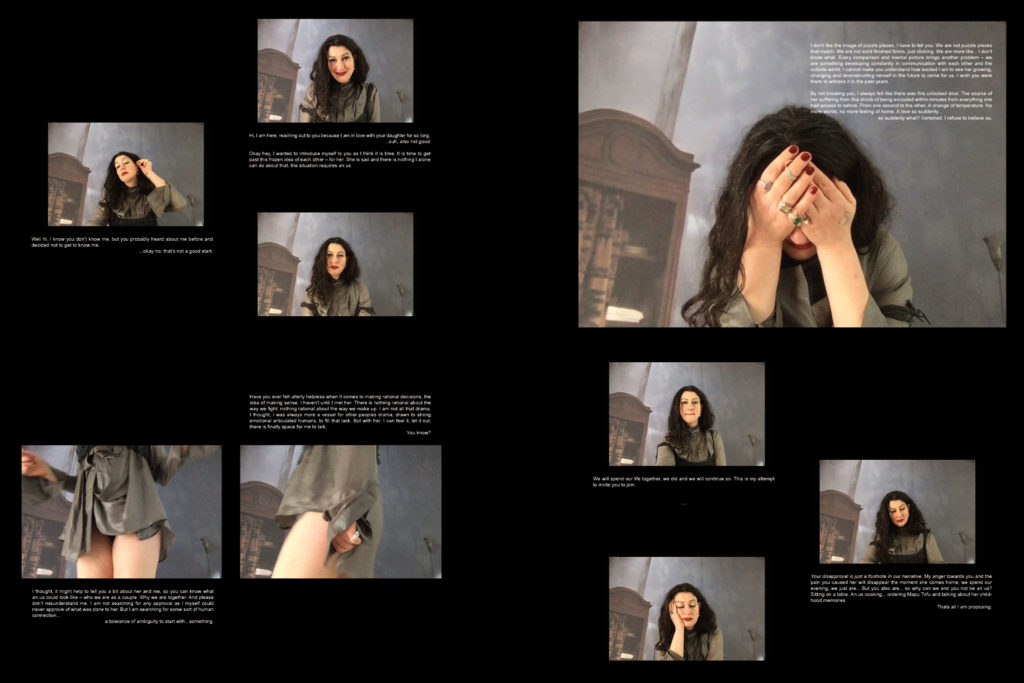
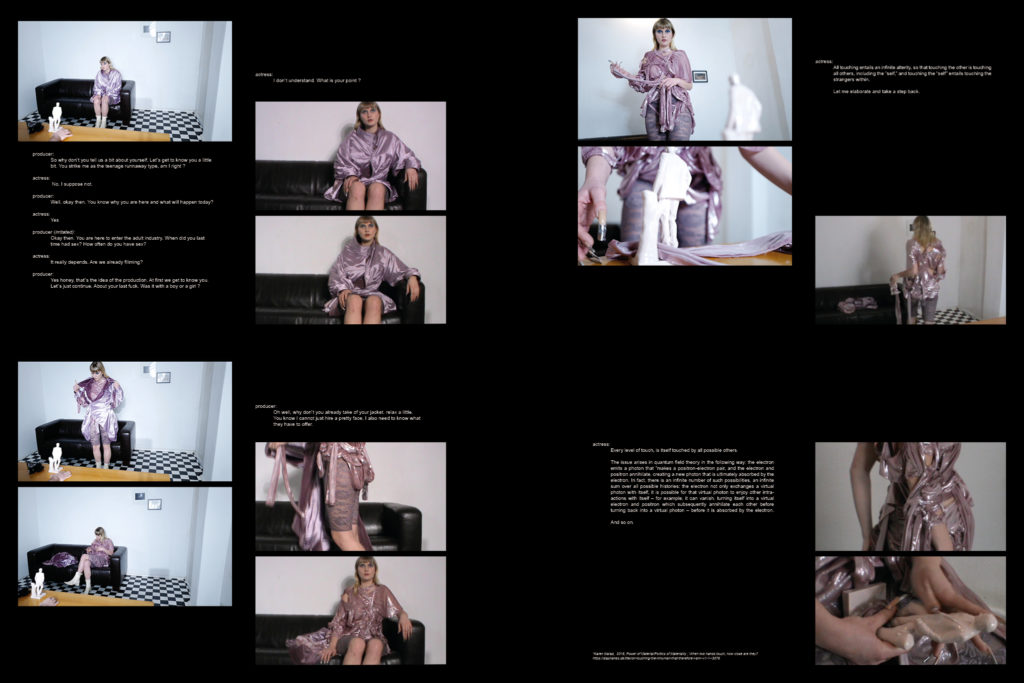
Betreuer:
Valeska Schmidt-Thomsen & Ira Solomatina
Credits:
POSTER:
Photography: Lexi Sun, Poster Design: Hilka Dirks, Artists & Actors: Mathilda Switala, Angel Hafermaas,Liv LeMoyne, Fama M‘Boup,-
Sadie Lune, Lexi Sun, Mengxuan Sun, Hêvîn Tekin, Hair and Make-Up: Una Ryu and Nina Luckat, Nail Design: Camilla Volbert, Sewing Assistances : Veronika Hopponen, Gabi Selzer, Anni Uder and Carina Schulz
FILM PROJECT:
Director of Photography: Lexi Sun, Garment Design: Johanna Braun, Production Design: Hilka Dirks, Camera: Sezigin Kivrim, Gaffer: Abby Wright, Director of Audiography: Liese Schmidt, Music by Fama M‘Boup, Liv LeMoyne and Selenay Kiray, Hair and Make-Up: Una Ryu and Nina Luckat, Nail Design: Camilla Volbert, Sewing Assistances: Veronika Hopponen, Gabi Selzer, Anni Uder and Carina Schulz.
Written and directed by Johanna Braun
With collective Input by Zuréh Zuzu Jaramillo, Dominik Cosentino, Sama Abu Hanna, Martin Fell, Stephie Morawetz, Miku Kivu, Lexi Sun and Hilka Dirks.
In collaboration with Mathilda Switala, Angel Hafermaas,Liv LeMoyne, Fama M‘Boup, Sadie Lune, Lexi Sun, Mengxuan Sun and Hêvîn Tekin.


